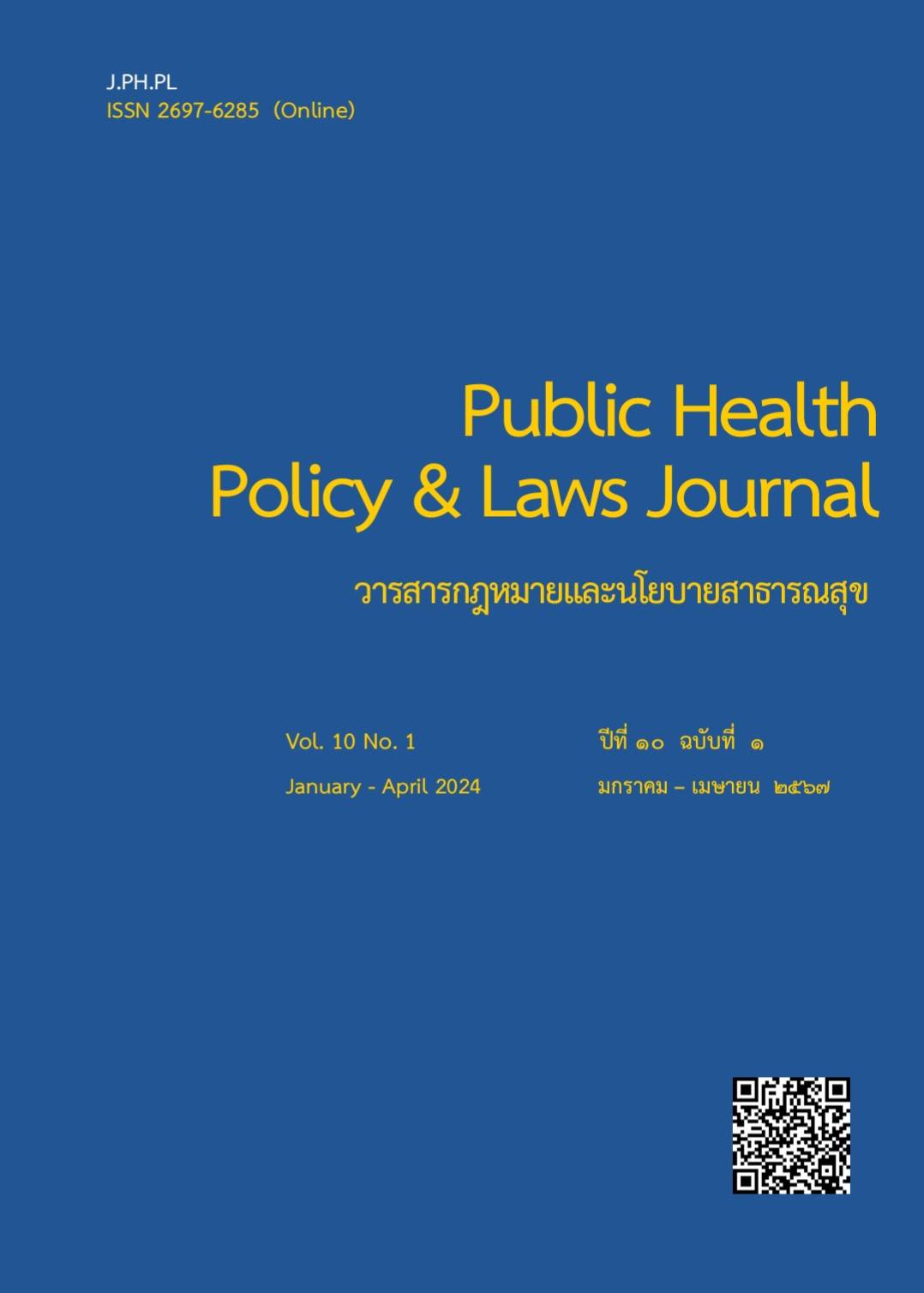Sexual Harassment Preventive Behaviors Among Junior High School Students Under Bangkok Metropolitan Schools
Keywords:
prevention, sexual harassment, knowledge, attitudes, junior high school studentsAbstract
Sexual harassment is a condition affecting a lot of people. Finding a solution to this issue is crucial because it is prevalent among students. This cross-sectional survey study, among junior high school students, under Bangkok Metropolitan Administration, with aims to 1) study the students' socio-demographic factors, including education, academic achievement, and experience of sexual harassment. 2) study the relationship between knowledge, attitudes, and sexual harassment preventive behaviors. 3) study factors to predict sexual harassment preventive behaviors.
Multistage random sampling was used to recruit 306 junior high school students. Data analysis for percentage, mean, standard deviation, Chi-square test, Pearson Product-Moment Correlation Coefficient and Stepwise Multiple Regression Analysis, were conducted.
The findings revealed that students' knowledge of sexual harassment (r = 0.354), attitudes towards sexual harassment (r = 0.373), and self-efficacy (r = 0.567), have positive correlation with preventive behaviour of sexual harassment at a moderate level with statistical significance (p-value <0.05). Factors predicting sexual harassment preventive behaviors with a statistical significance (p<0.05) included self-efficacy and knowledge of sexual harassment, which could predict for 36.1%. Recommendations are: the school should provide knowledge for students and staff in all departments, so that they are better equipped to prevent sexual harassment.
References
Prakotwong, N. (2016). Opinion of students about Sexual Harassment in academy. Thammasat University, (in Thai).
Khangpiboon, K., Seramethakul, M. (2020). Global (online) problems: sexual harassment
on social media. (online), Retrieved form: https://www.law.tu.ac.th/seminar-summary-online-sexual-harassment/
CNN health. (2017). Sexual harassment: How it stands around the globe. (online), Retrieved form: https://edition.cnn.com/2017/11/25/health/sexual-harassment-violence-abuse-global-levels/index.html
Women and Men Progressive Movement Foundation. (2018). Revealing the statistics of sexual violence in Thailand. Found a young victim The most is 5 years old. (online), Retrieved form: https://workpointtoday.com/0เปิดสถิติความรุนแรงทาง/.
Popanchamakul, R., Tongkhambunchong, S., Supwirapakorn, W. (2019). A study of patterns and response methods of sexual harassment of secondary school students. MBU Education Journal : Faculty of Education Mahamakut Buddhist University. 7(2), 441-448.
Sornprasit, S. (2002). School Under the Jurisdiction of General Education Department, Samut Sakhon Province. Silpakorn University, (in Thai).
Kirdin, S. (2019). Effects of life skills program on knowledge and life skills to prevent sexual assault in female secondary school students. The Journal of Psychiatric Nursing and Mental Health. 33(1), 128-145.
Dokkham, K., Jannorkaew, N., Fugnakee, P., Sannooh, P., Yamprai, P. (2022). Factors associated with risk behavior to be sexual harassed of people in Moo 16, Ban Mae Ka Huay Kean, Maeka district, Phayao Province. UBRU Journal for Public Health Research. 11(1), 83-95.
Kulawong, S. (2012). The effects of training programs to prevent sexual risk behavior on perceived self-efficacy of hmong hill tribe female students in secondary school, grade 1-3. Independent Study M.P.H., University of Phayao. (in Thai).
Isaro, N. (2016). Factors Predicting Appropriated Sexual Behaviors among the Lower Secondary School Students in Chanthaburi Province. The Journal of Faculty of Nursing Burapha University. 24(2), 72-84.
Butcharoen, W. (2012). Factors Related to Sexual Risk Behavior among Thai Secondary School Students. Journal of Public Health. 42(1), 29-39.
Bandura, Albert. (1986). Social foundation of thought and action: A social cognitive theory. Englewood Cliffs, New Jersey: Prentice-Hall.
Downloads
Published
How to Cite
Issue
Section
License
Disclaimer and Copyright Notice
The content and information presented in articles published in the Journal of Law and Public Health Policy represent the opinions and sole responsibility of the respective authors. The editorial board does not necessarily agree with or assume any responsibility for the views expressed.
All articles, data, content, images, and other materials published in the Journal of Law and Public Health Policy are the intellectual property of the journal. Any individual or organization wishing to reproduce, distribute, or otherwise use the entirety or any part of such materials must provide proper citation.





